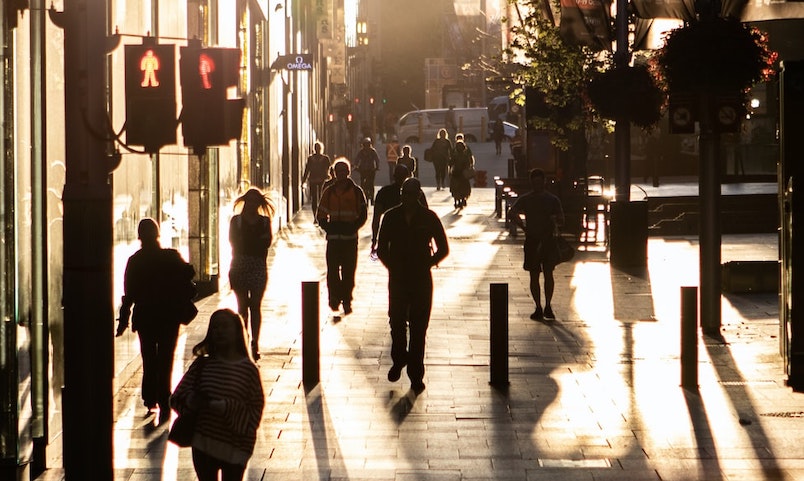By Alan Austin: Michael West Media.
Workers now have the lowest share ever of the nation’s earnings. Under-employment is even worse now than it was late last year. Alan Austin looks behind the spin to report the true state of unemployment and economic management in Australia.
The actual jobless rate is much higher than the 4.5% which Employment Minister Stuart Robert falsely claimed is “the lowest rate recorded since 2008”.
Over the seven years from June 2014 to June 2021, the average income for workers has risen from $70,148 to $82,605. That is an increase of 17.8%, or 2.36% per year. Inflation over that period has averaged 1.62%.
That rise is much lower than at any time since records began in 1994. Over the 19 years before the Coalition came to office, annual growth averaged a healthy 4.21%.
Company profits before tax increased over the last seven years by 76.6%, an average rise of just under 9% per year according to the ABS.
Profits are currently increasing at four times the rate of wage rises.
Wages as a share of the national pie
For most of the fifty years before the Coalition was elected, the share of the country’s income going to workers fluctuated between 53% and 60% (ABS). As recently as the first quarter of 2016, workers received 55.2%. The share going to corporate profits has mostly varied between 18% and 28%.
This has recently shifted. The workers’ share fell below 52% in the 2017 first quarter, then below 50% in the second and third quarters of 2020. This has not happened since 1959.
The share going to profits has risen substantially. This clicked over 28% in late 2018, then 29% in mid-2019. It exceeded 30% for the first time in June 2020.

These shifts may not be temporary. The workers’ share has stayed below 52% for the last five quarters. The profit share has stayed above 30% for four of the last five quarters.
The real jobless rate
The official ABS jobless rate of 4.52% is a false representation of the data. One intriguing column in last week’s detailed jobs data confirms this and allows us to calculate the real rate. ABS shows those counted people as “employed” who worked zero hours in August – 1,157,000 workers, 8.48% of the workforce.
Every month some workers are legitimately shown “working” zero hours because of annual and other leave and gaps between jobs. Historically, this has been a stable percentage of the workforce. If we look at the August zero-hours cohort over the previous twelve years we find the lowest was 5.07% in 2011 and the highest was 6.15% in 2017. That is a pretty tight range, with the average at 5.69% of the workforce.
It is fair therefore to accept 5.69% of the August “workers” working zero hours as “employed”. But the excess over that 5.69% in reality were unemployed.
Simple arithmetic gives the actual jobless rate in August of 8.48 minus 5.69 equals 2.79 which we add to the official jobless of 4.52, which equals 7.31%. That is the real figure, which allows comparisons over time in Australia and comparisons internationally.
The real rate of 7.31% is nowhere near “the lowest since 2008” as Employment Minister Stuart Robert has claimed. Quite the contrary, it is close to the ABS rate of 7.35% recorded in June 2020, which was the highest since 1998.
Labour Force Australia (ABS)
Global ranking
Australia has usually ranked in the top ten or twelve OECD member countries on jobless rates since comparative data was first tabulated in the 1960s. The current real rate of 7.31% ranks 26th, the lowest ranking ever.
Elderly citizens forced back to work
For virtually the entire period before this Coalition Government, the percentage of seniors in their seventies and eighties obliged to continue working remained below 12%. It clicked over 13% for the first time in 2017, then 14% in 2018, then above 15% earlier this year.

This also appears to be a settled shift, as seniors have been forced by poverty back to work. The percentage has been above 14.3% for nine of the last ten quarters.
Further fun facts
The ABS data also showed us last week (here and here) that under the Morrison Government Australia now has:
- the all-time lowest proportion of full-time jobs,
- underemployment at an all-time record,
- the all-time high number of jobless women,
- the highest number of unemployed youth this century,
- the highest proportion ever of full-time students forced to work part-time,
- record size of the public service – in numbers and as a percentage,
- the worst decline in productivity growth since 1991,
- the worst long term jobless this century, and
- the worst shrinkage in the labour force on record.
These are not attributable only to the pandemic. Most of these trends were evident before 2020. They have bolstered the view expressed increasingly in the independent media that the Morrison Government is the least competent at economic management since World War II. But it is not a story you’ll read in the mainstream media.
- Alan Austin is a freelance journalist with interests in news media, religious affairs and economic and social issues. You can follow Alan on Twitter @alanaustin001.
- Other stories by Alan Austin published in A Sense of Place Magazine can be found here.
- Feature Image by @hillypix, Unsplash.


